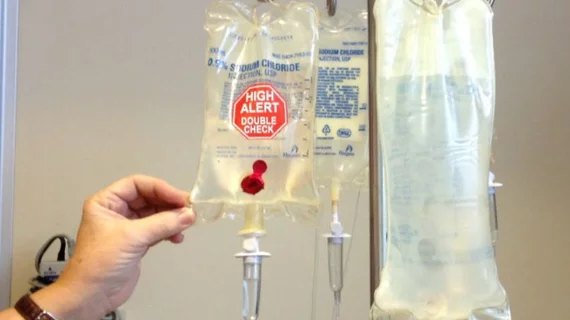FDG-PET shown to predict pancreatic cancer outcomes prior to surgery, could guide treatment decisions
Researchers recently shared how metabolic imaging could help guide therapeutic decisions for patients with pancreatic cancer.
In the September issue of the Journal of the National Comprehensive Cancer Network, experts share how the use of positron emission tomography (PET) with 18-fluorodeoxyglucose (FDG) tracer can assess patients’ responses neoadjuvant chemotherapy. Importantly, this objective analysis occurs before patients with borderline resectable/locally advanced pancreatic cancer undergo invasive surgery, explained co-lead author of the study Ajit H. Goenka, MD, with the Mayo Clinic Comprehensive Cancer Center.
"Because we intend to use preoperative chemotherapy to benefit patients with pancreatic cancer, we need to be sure that therapy is doing what we think it's doing—killing the tumor,” Goenka said in a news release. “We must ‘do no harm’ by objectively showing treatment efficacy before complex surgical resection.”
Goenka went on to explain that FDG-PET scans in these patients allow clinicians to determine whether the tumors are still viable or not, thus playing a significant role in making treatment decisions after imaging.
The study included a total of 202 patients with borderline resectable/locally advanced pancreatic cancer. Each patient had undergone either mFOLFIRINOX or gemcitabine/nab-paclitaxel chemotherapy. According to the patients’ FDG-PET scans, major metabolic responses were associated with major pathologic responses. This finding was consistent regardless of the patients’ biochemical responses (measured by CA 19-9 levels), but both factors combined were observed to have even better predictive value.
Mahmoud M. Al-Hawary, MD, a radiologist at University of Michigan Rogel Cancer Center, who was not involved with this research, explained that FDG-PET offers providers more detailed information than CT and MRI, which are current standards of care for pancreatic cancer staging prior to chemotherapy. Al-Hawary noted that it is difficult to differentiate scar tissue from viable tumor because they look similar on traditional CT and MRI exams.
“We need a different type of imaging, one not based on size or shape but some other indicator of tumor function and viability to improve upon the limited clinical markers that are in current use,” Al-Hawary said in a statement. “PET imaging can provide this functional information by showing presence or absence of tumor activity, which has been extensively proven to predict tumor response in various solid tumors.”
While the results of the work are promising for the future treatment of pancreatic cancer, the researchers indicated that there is still a need for additional studies with larger cohorts and at multiple institutions to confirm the findings and fine tune future practices.
The study can be viewed here.

